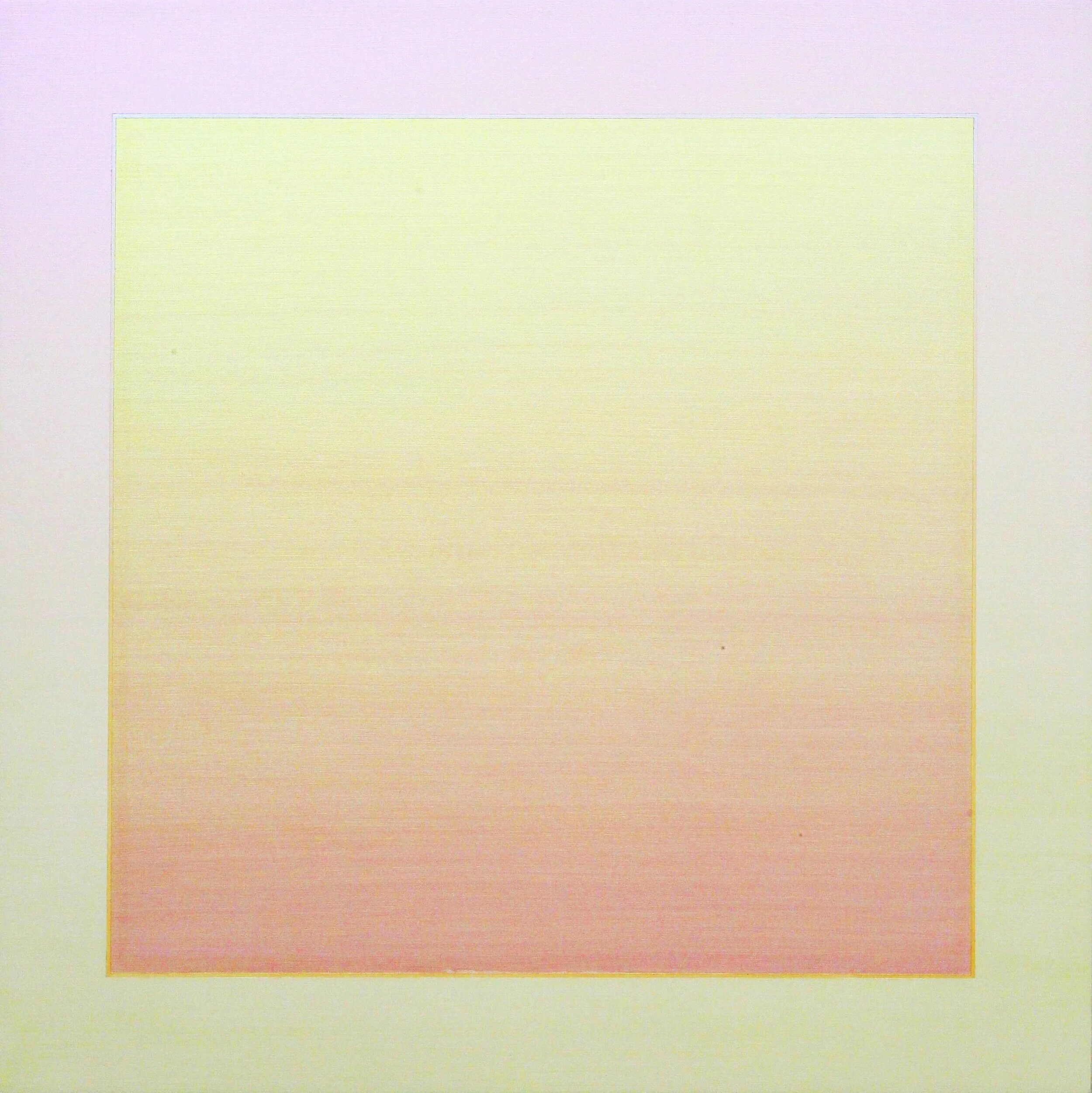William Turner Gallery is pleased to announce Light | Space, an exhibition of new paintings by Shingo Francis and Peter Lodato. Both artists exploit the qualities of their respective mediums to achieve works of exquisite subtlety. Their nuance invites a quiet curiosity and provokes a sense of wonder, as one moves effortlessly to a mode of engaged contemplation.
Shingo Francis grew up in Los Angeles, immersed in the intense light and vast ocean vistas of life in southern California. Like many LA artists, Francis became fascinated with the ever-changing qualities of light and how it affected one’s perception and experience of the world. As the son of painter Sam Francis, Shingo also happened to grow up in the heart of LA’s nascent artworld, where artists such as Larry Bell, Robert Irwin, James Turrell, Craig Kaufman and Peter Alexander were utilizing new materials to explore the phenomenology of how we perceive. These pursuits became loosely known as California’s Light and Space movement and for many of them, their artwork was as much a catalyst for exploring perception as it was an art object unto itself.
Francis has continued this pursuit with a series of gossamer-like paintings with colors that appear in constant flux, changing as one moves about them. Utilizing interference paints – a medium of crushed, titanium-coated mica that refracts light - the colors in these pieces shimmer and shift depending on the angle of the viewer and the reflection of light. Rectangular shapes conform to the shape of the canvas, creating a framework of change as viewers move. What one sees becomes inherently tied to their particular perspective and the character of the light at any given time.
The necessity of the viewer’s presence and engagement with the seeing and experiencing of the “work”, is a driving interest for Francis. He intends these paintings to counter the notion that the virtual reproductions of artwork on our phones, tablets and screens can replace, or even approximate, the actual physical and emotional experience of being “present” with a work of art.
Shingo Francis has been the subject of numerous national and international exhibitions. He was awarded the Fumio Nanjo Award from the Mori Museum in Tokyo and is in numerous museum and institutional collections, including The Frederick R. Weisman Foundation in Los Angeles.
A native of southern California, Peter Lodato began making work in the late 1960s as part of the West-Coast’s Light and Space movement. Aligned with the concerns of his contemporaries, Lodato first constructed wall paintings and light installations that challenged the nature of perception and explored the way physical environments could be transformed into immersive experiences. The effect of these works was to alter our sense of space and dimension, and to realize how easily influenced we are by subtle shifts in shape and volume. The installation paintings eventually progressed to works on canvas that sought similar spatial effects, yet introduced new levels of depth.
Lodato’s reductive paintings convey deceptively complex tensions between color, texture, form and space. As one looks closely, binary bands of color appear to alternately advance and recede. The scumbled surface of one vertical band hums with the hint of a color pushing up from beneath, while an opposing vertical band disappears into the void. Yet, as one shifts focus to the void, it becomes a monolithic mass, set now against the light airiness of a scumbled background. The effect of this subtle spatial pulsing is akin to noticing one’s breathing during meditation – simple, profound and deeply satisfying.
Peter Lodato has exhibited at the Whitney Museum of Contemporary Art, the Museum of Contemporary Art in. Los Angeles and the Los Angeles County Museum of Art.
In 2000, Lodato’s work was the subject of an extensive retrospective at The Frederick R. Weisman Museum and is in numerous important public and private collections.

